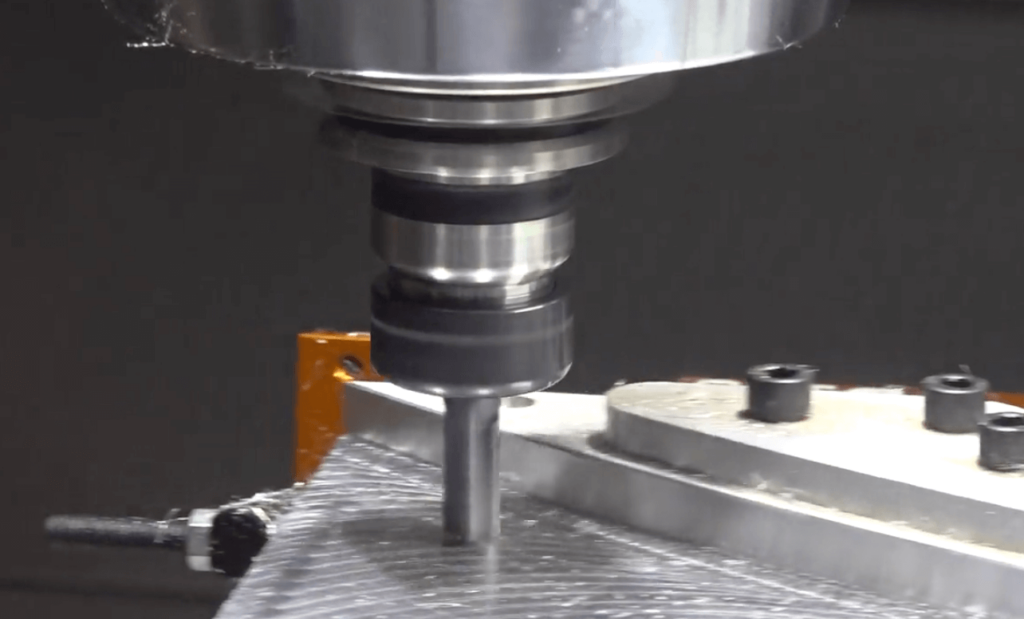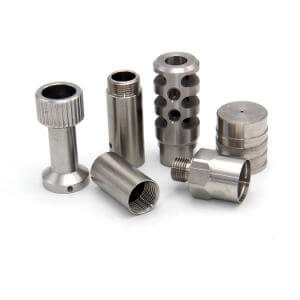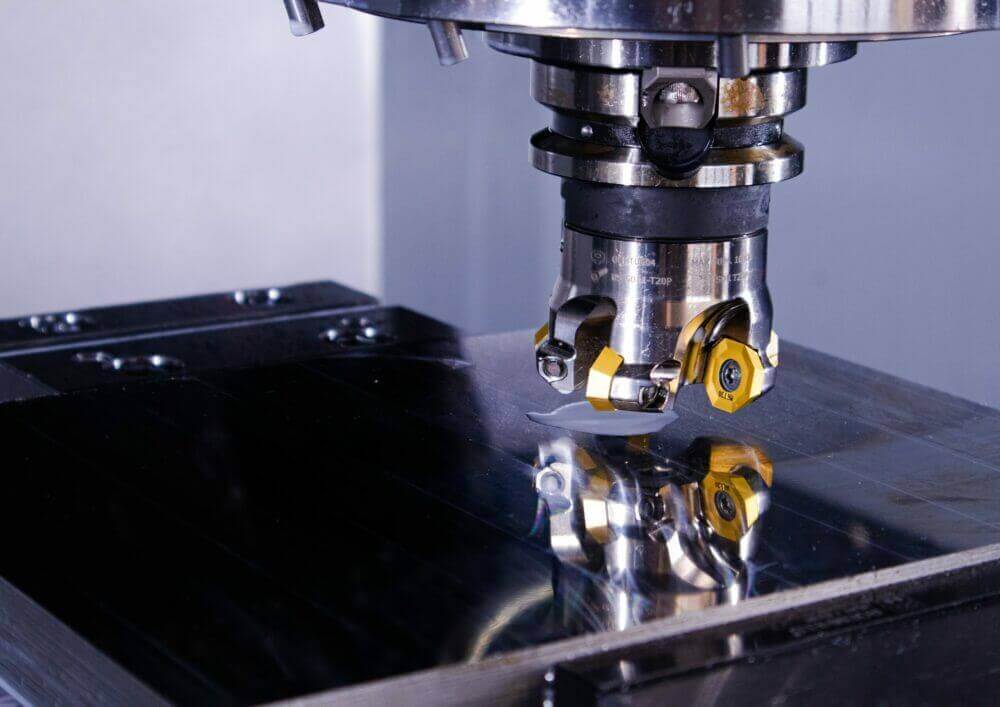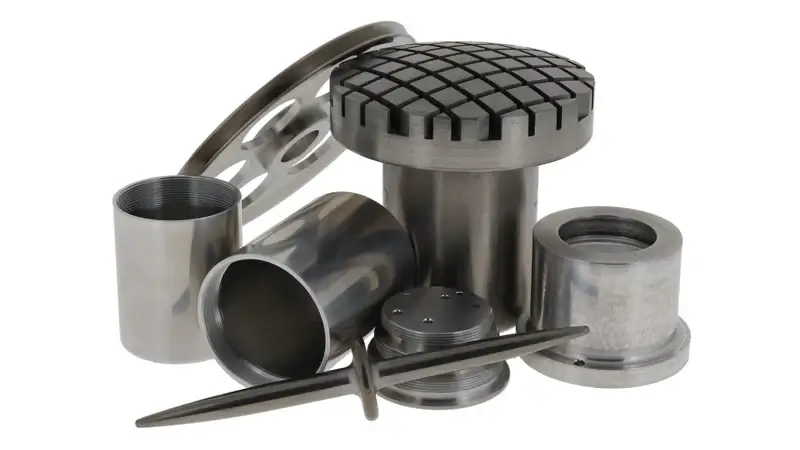A Detailed Explanation of CNC Precision Machining
Delve deeper into the complexity of CNC precision machining, where computer-controlled precision is combined with raw materials to manufacture everything from complex assemblies to heavy parts.
1.What is CNC precision machining?
CNC precision machining is a computer-controlled manufacturing process that focuses on the ability to consistently replicate specific attributes in large production runs, ensuring that the dimensions and features of multiple units closely match target values. It is often used in industries that require high precision and consistency.
In CNC precision machining, precision is achieved through a rigorous quality control process, where machine shops and suppliers inspect and measure a representative sample of production parts to meet predefined quality standards and ensure that components meet specified tolerances.
2.Tolerances and Quality Control
1) Tolerance Standards: ISO GPS and ASME Y14.5
Precise dimensional accuracy and tight tolerances are critical to CNC precision machining. The function and assembly of components often rely on parts maintaining exact shape and size within extremely narrow tolerances. Therefore, maintaining tight tolerances is critical to quality control of CNC processes.
The ISO GPS (Geometric Product Specification) system contains more than 100 standards covering dimensioning, tolerancing, measurement, inspection, and calibration, including but not limited to:
- ISO 8015: Defines the basic concepts and rules of the GPS system.
- ISO 1101: Contains specifications and rules for geometric symbols for drawing/part definition.
- ISO 2768: Establishes a general geometric dimensioning and tolerancing standard. It is divided into two parts: ISO 2768-1 for linear and angular dimensions without specified tolerances, and ISO 2768-2 for toleranced geometric features.
In contrast, ASME Y14.5 is a single standard that focuses only on drawings and requires separate documents for verification.
It is worth noting that the ISO GPS system is more expensive due to the multiple documents involved. The choice between these standards depends on factors such as specific application needs, budget constraints, and training availability.
Maintaining tight tolerances requires continuous quality control and corrective actions at all stages of CNC precision machining. Tight tolerance requirements require meticulous process monitoring to detect any potential nonconformances.
2) How to improve the accuracy of CNC precision machining?
- Ideal tolerance design: the art of trade-offs
Tighter tolerances increase accuracy, but also increase manufacturing complexity and cost. Features should be classified according to functional importance – dimensions that are critical to assembly fit or alignment require fine tolerances, while other dimensions can allow for greater variance to reduce costs without affecting functionality.
- Ensure the accuracy of the measurement system
It is critical to verify the accuracy and precision of the measurement system itself through regular calibration and the use of gauge blocks/pins. Comparing the measurement system readings to known gauge values can reveal any measurement drift. This ensures that the problem stems from the process/part rather than measurement inaccuracies.
- Statistical methods for analyzing variation
Measurement system analysis (MSA) and instrument R&R (repeatability and reproducibility) apply statistics to distinguish between multiple sources of variation – measurement, operator, equipment, environment. They can clearly identify the largest sources of nonconformance, allowing optimization efforts to be focused.
- Quality control at the programming stage
Quality control begins at the programming stage. Tools such as simulation can verify that the cuts meet tolerances before actual production. On the shop floor, regular part inspections can detect early problems caused by setup errors or machine drift.
- Process Monitoring Using Statistical Control Charts
Statistical process control (SPC) charts track dimensions for outliers that require troubleshooting. Precision instruments such as coordinate measuring machines (CMMs) digitally scan sampled parts to find discrepancies. Nonconforming results trigger root cause analysis to isolate the problem.
Common corrective actions include machine calibration, tool changes, thermal condition adjustments, and fixture modifications. Operators record correction details to prevent recurrence of errors. Processes are documented to ensure consistency between shifts.
Even during a run, quality checks such as process measurements capture deviations so adjustments can be made to maintain accuracy.
- Fixtures and Fixtures
Specialized fixtures use pins, locators, and clamps to precisely position parts for machining within tight tolerances. This ensures that features are cut in the correct positional relationship.
Strong fixtures securely hold parts to the machine table/chuck, allowing multi-faceted surfaces and complex geometries to be cut without slippage that can compromise accuracy.
- Post-production audits
Post-production audits confirm that the final part meets specifications. Scheduled audits involve measuring a statistically significant sample of parts from a production run using a CMM or precision measuring equipment. All critical dimensions and features are re-verified.
In summary, a comprehensive quality protocol is needed to monitor all variables that affect accuracy and iteratively improve the process.

3.CNC precision machining equipment
CNC precision machining utilizes programmable automation to precisely cut and shape materials. Common CNC equipment includes lathes, milling machines, routers, laser cutters, electrical discharge machines (EDM), and plasma cutters.
1) CNC lathes
CNC lathes rotate workpieces onto fixed cutting tools for operations such as facing, turning, drilling, threading, and grooving. CNC systems can precisely control spindle speed, feed rate, depth of cut, and other parameters. They are ideal for repetitive filleting, facing, and turning operations on axisymmetric parts.
2) CNC Milling Machines
CNC milling uses a rotary cutter to remove material by advancing the workpiece through a rotating tool. The CNC controls the feed rate, spindle speed, tool path, and depth of each pass. It is suitable for complex geometries, slots, grooves, and surface finishing operations.
3) CNC Routers
CNC routers function similarly to CNC milling machines, but with a rotary router bit for cutting softer materials such as wood, plastic, and aluminum. They excel at rapid prototyping, engraving, woodworking, sign making, and aerospace parts.
4) CNC Laser Cutters
CNC laser cutters direct a high-powered laser beam at a workpiece to melt, burn, or vaporize the material. The focused laser follows a programmed path to cut complex shapes with high precision and a small kerf width. Laser cutting is suitable for sheet metal, plastic, wood, and other materials.
5) CNC Electrical Discharge Machining Machines
CNC Electrical Discharge Machining (EDM) uses electrical sparks to erode conductive materials without mechanical force. The CNC system directs tiny voltage pulses between the workpiece and an electrode. EDM can create complex cavities, holes, and details in hard metals that may be difficult or impossible to achieve with other processes.
6) CNC Plasma Cutters
CNC plasma cutters feed a conductive gas through an electric arc to melt and blow away the material. The plasma jet follows a programmed path to cut through plates up to 1 inch thick. Plasma cuts quickly and produces high-quality cuts when cutting thick steel, aluminum, and stainless steel.
7) 3-, 4-, and 5-axis CNC Machines
Advanced CNC machines offer control of 3, 4, 5, or more axes. 3-axis machines move the tool or workpiece linearly in the X, Y, and Z directions. 4-axis adds a rotary table for tilted and angled features. 5-axis machines provide full freedom of motion in two additional rotary axes, enabling the cutting tool to approach the workpiece from any direction. 5-axis CNCs enable highly complex geometries in aerospace, medical, and automotive parts.
8) Multi-Tool CNC Machines
Multi-tool CNC machines utilize automatic tool changers that allow the machine to perform multiple operations without human intervention, thereby reducing operating time. The tool magazine stores a variety of cutting tools, such as end mills and drills of various diameters, which the machine can automatically swap into the spindle when needed. This allows different features of a part to be completed with a single setup without having to manually change tools between operations.
Multi-tool capabilities are particularly beneficial for large-scale production where uptime is critical. Common multi-tool CNC machines include machining centers with milling, drilling, boring, and tapping capabilities. Overall, multi-tool CNCs reduce cycle time and productivity for complex components that require frequent tool changes.

4.CNC precision machining materials
CNC precision machining can process a wide variety of materials, including metals, plastics, composites, and ceramics.
The machinability and cutting characteristics of each material determine the appropriate feeds, speeds, tools, and strategies. Harder materials generally require slower speeds, smaller cutting depths, and rigid machine tools. Advanced techniques such as high-speed machining and hard turning can expand the capabilities of challenging materials.
1) Metals
Common metals machined with CNC equipment include aluminum, steel, stainless steel, brass, and titanium. Each material has unique properties that make it suitable for certain applications and challenging to machine in different ways.
2) Aluminum
Aluminum is lightweight, corrosion-resistant, has good thermal conductivity, and is easy to machine. The 6xxx series aluminum alloy contains magnesium and silicon, is strong, and is lighter than steel.
It is commonly used in aerospace components, architectural features, automotive parts, and consumer products.
Material options: Aluminum 6061, 6063, 6082, 7075, 2024, 5052, A380, etc.
3) Steel
Steel provides high strength and hardness for structural and mechanical parts, but requires rigid machines and high power to cut.
Material options: 1214L, 1215, 1045, 4140, SCM440, 40CrMo, etc.
4) Stainless steel
Stainless steel has excellent durability and corrosion resistance, making it an indispensable component in industries such as medical devices, food processing and construction applications.
However, its hardness can pose challenges during processing, requiring specialized tools and expertise.
Material options: SUS303, SUS304, SS316, SS304, SS416, SS316L, 17-4PH, etc.
5) Brass
Brass and bronze have beautiful, low friction and antibacterial properties, suitable for manufacturing valves, fittings and decorations.
Material options: 260, C360, H59, H60, H62, H63, H65, H68, H70, bronze, copper, etc.
6) Titanium
Titanium has an unmatched strength-to-weight ratio, but is difficult to cut and requires special tools. Titanium alloys such as Ti-6Al-4V have good biocompatibility.
Material options: Titanium grades F1-F5.
7) Plastics
Material options: POM/Nylon/PC/PMMA/PVC/PU/Acrylic/ABS/PTFE/PEEK, etc. Some of the most common choices are:
1.POM (Polyoxymethylene)
POM is a low-friction, high-strength plastic used for CNC precision machining of mechanical parts, gears, home appliances, and automotive applications.
2.PC (Polycarbonate)
Polycarbonate is known for its optical clarity, impact resistance, and heat resistance. It is commonly used in optical lenses, automotive components, and safety equipment.
3.PMMA (Polymethylmethacrylate)
PMMA or acrylic has excellent clarity and UV resistance, making it ideal for signage, displays, and optical components.
4.ABS (Acrylonitrile Butadiene Styrene)
ABS is a widely used thermoplastic with good impact resistance, suitable for consumer products and prototyping.
5.CAD/CAM and Programming
1) CAD Software
Computer-aided design (CAD) software, used to create digital 3D models and drawings of parts. CAD plays a vital role in precision machining because it enables the following functions:
- Design components with precise tolerances, modeling them directly into part geometry
- Perform interference checks and simulate assembly
- Generate engineering drawings and specifications
- Facilitate design sharing between teams and suppliers
2) CAM Software
Computer-aided manufacturing (CAM) software, which converts digital CAD designs into CNC tool paths that can be automated. CAM programmer:
- Define machining operations, tools, speeds, feeds
- Simulate tool paths to verify accuracy and detect errors
- Generate G-code machining programs optimized for CNC machines
3) G-code and M-code
G-code is a digital programming language interpreted by CNC machines. It contains a set of pre-programmed instructions that use letter addressing and numerical values to command:
- Fast linear and circular tool movements (G00, G01, G02, G03)
- Spindle and coolant control (M03, M08)
- Tapping and threading cycles (G32)
M codes provide additional functions such as tool changes, coordinate system shifts, and optional stop control.

6.Surface treatment in CNC precision machining
Surface treatment in CNC precision machining is the final process that elevates a component from a raw function to a polished, high-performance product.
1) Anodizing
Anodizing forms a protective oxide layer on metals such as aluminum, enhancing corrosion resistance and providing a decorative effect.
2) Sandblasting
Shot peening produces a uniform matte finish and can remove blemishes or contaminants.
3) Screen Printing
Screen printing involves printing graphics or labels directly onto the surface of a part, adding branding or informational elements.
4) PVD Coating (Physical Vapor Deposition)
PVD coating deposits a thin, durable coating with enhanced wear resistance, corrosion protection, and unique colors.
5) Electroplating (Zinc, Nickel, Chrome, Titanium)
Metallic coatings enhance corrosion resistance and provide decorative effects.
6) Brushing
Brushing creates a finely textured, directional effect on a metal surface and is often used to increase aesthetics.
7) Painting
Painting can add color, protection, and beauty to a part, making it ideal for consumer products and industrial parts.
8) Powder Coating
Powder coatings provide a durable and aesthetically pleasing finish through the use of electrostatically charged powder particles.
9) Passivation
Passivation is a chemical process used to reduce the reactivity of metal surfaces and improve their resistance to oxidation and corrosion
10) Electrophoresis
Electrophoresis involves immersing parts in an electrically charged coating solution to create a protective and decorative coating.
7.Advanced Technologies for CNC Precision Machining
1) Automation
The integration of automation technologies such as robots and machine manipulation systems simplifies the production process, reduces human intervention and improves efficiency.
2) Additive Manufacturing
The fusion of CNC precision machining and additive manufacturing technologies enables the manufacture of complex parts and reduces material waste. This hybrid approach combines the precision of CNC precision machining with the design freedom of 3D printing.
In addition, additive manufacturing can create powerful, customizable fixtures with conformal cooling channels as needed to precisely position parts for CNC operations.
3) Internet of Things and Data Analytics
The Internet of Things (IoT) and data analytics provide real-time monitoring and data-driven insights for predictive maintenance, process optimization, and quality control.
8.Challenges and Limitations
Despite its extreme precision and consistency, CNC precision machining does have its challenges. Tight setup and process control are required to minimize vibration and deflection that can cause tolerance errors. Machinists must compensate for potential tool wear, chip evacuation issues, and complex fixture needs. Parts with deep cavities or complex internal geometries can be difficult to machine and inspect.
9.Conclusion
In summary, achieving CNC precision machining requires a systematic approach that encompasses engineering best practices at every stage. Proper material selection, toolpath programming, fixtures, and adherence to industry standards help maintain tight tolerances from design to production. Complementary technologies help with prototyping, machining, and automation.
Applying these principles together, manufacturers can meet the tolerance demands of markets with stringent safety and performance requirements and advance the capabilities of CNC precision machining.
